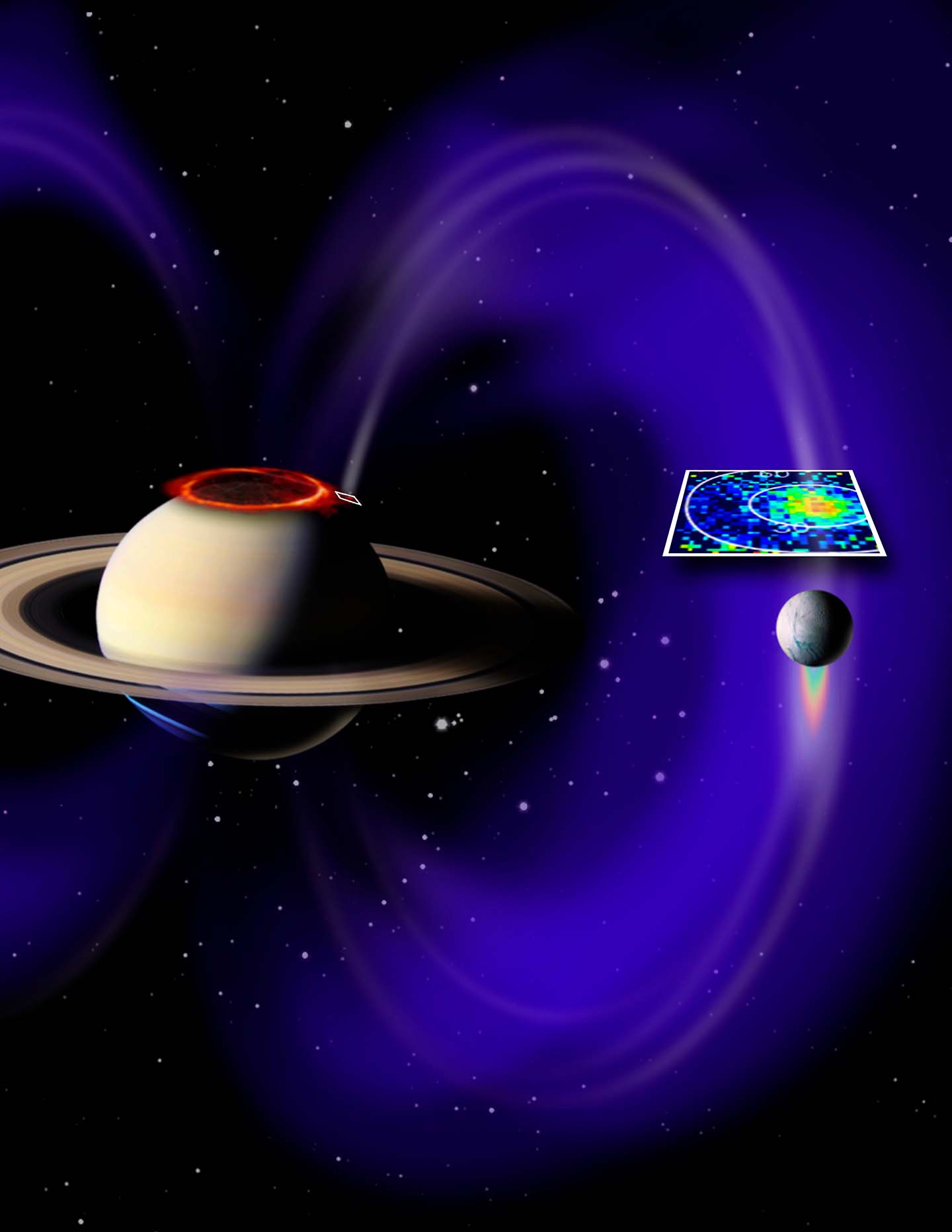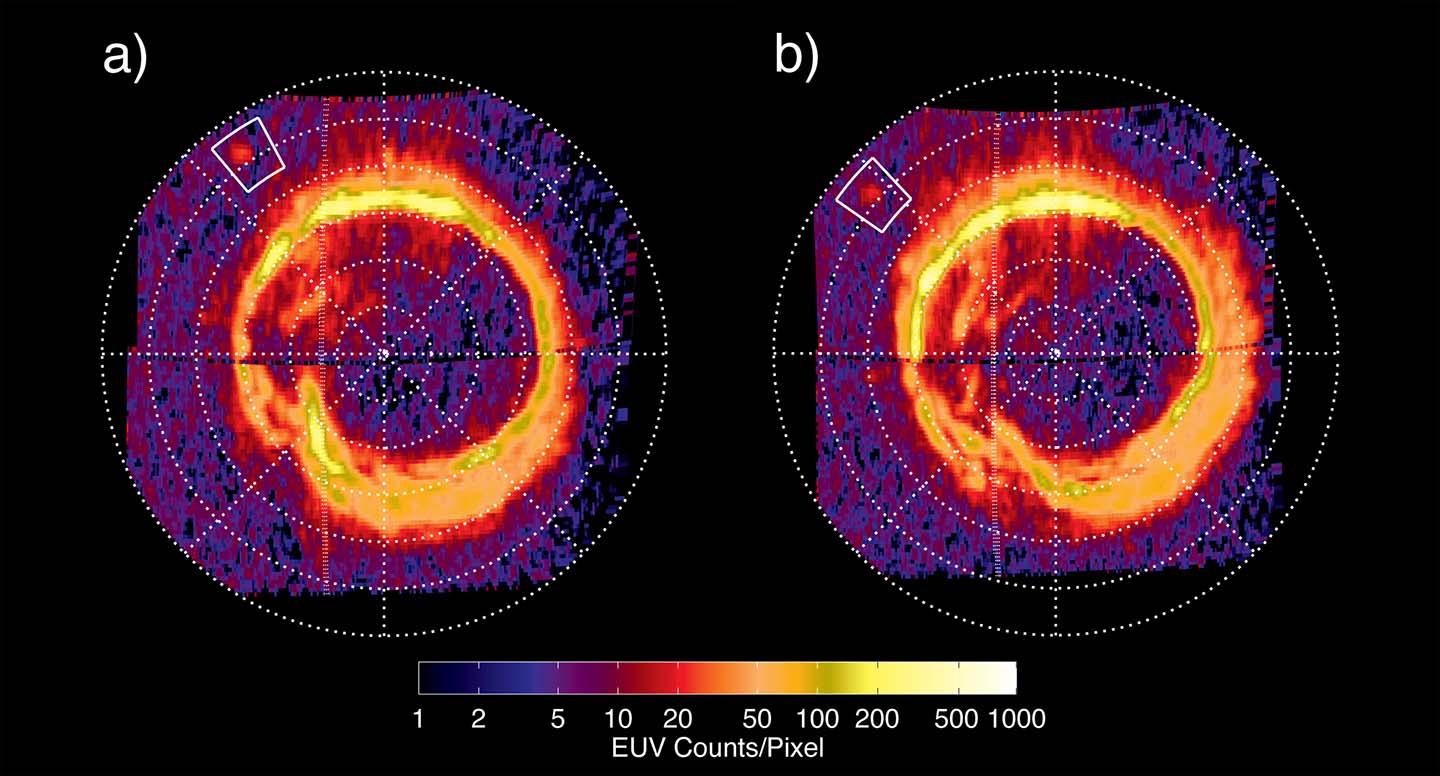Press Release
Icy Moon Zaps Saturn with Electron Beams
Hopkins APL Camera Captures Auroral Activity Between Enceladus and Saturn
Scientists working with data from NASA’s Cassini mission — now in its sixth year of operations at Saturn — have discovered an electrical current running between Saturn and its moon Enceladus that creates an observable emission on the ringed planet.
Don Mitchell, Cassini science team co-investigator from the Johns Hopkins University Applied Physics Laboratory (APL) in Laurel, Md., first observed the current connection as a strong “bull’s-eye” emission in the middle of images snapped by the APL-built ion and neutral camera (INCA) on Cassini. “The ion beam seen by the camera appears at exceptionally high energy, between about 30,000 and 80,000 electron volts, surprising for an interaction with such a small moon,” says Mitchell, co-author of a paper on the research appearing in the April 21 issue of the journal Nature.
This planet-moon connection also happens at Jupiter; Io, Europa and Ganymede all produce visible auroral footprints. “Accurately identifying the magnetospheric location of a source of auroral emission is very exciting,” says APL’s Chris Paranicas, a Cassini scientist not directly involved with the study. “At Jupiter, the identification of the satellite footprints in the auroral region allowed scientists to connect the polar region with the equatorial one magnetically. This paper will give us a great reference point for future studies of Saturn’s aurora.”

